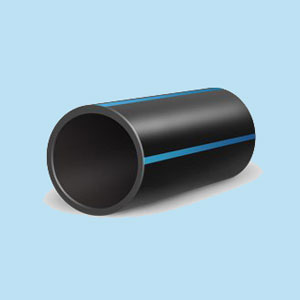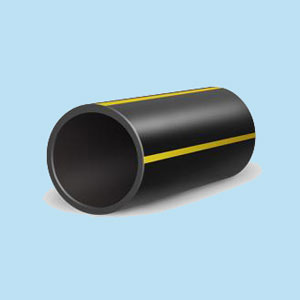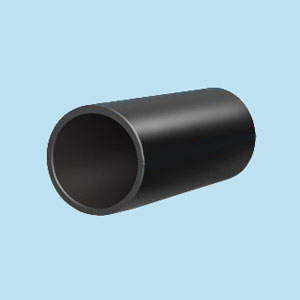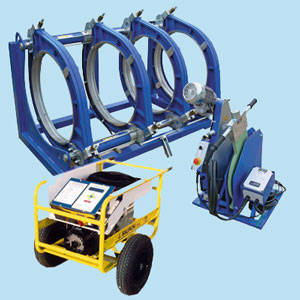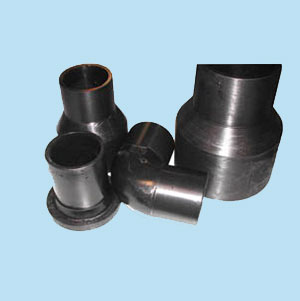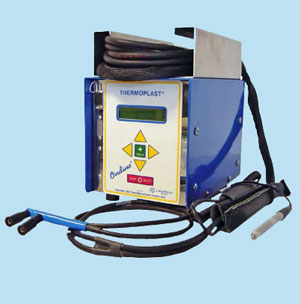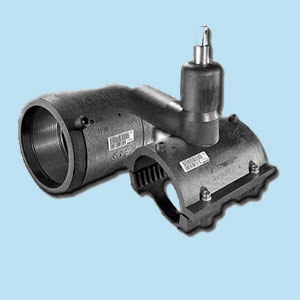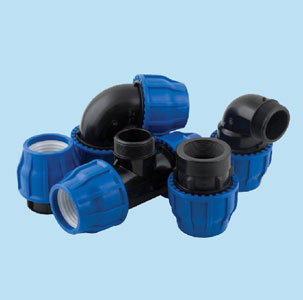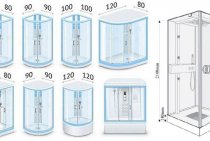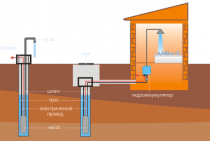The use of plastic bags
The scope of polyethylene is so wide that it goes beyond the standards. To begin with, consider which packages are used in which common areas:
- packaging - in stores, for storage, transfer of food. Provide good protection against moisture and bacteria;
- with a die-cut handle - for shoe stores, clothing stores, the printing industry;
- plastic bag with a zip-lock - suitable for vacuum storage. Such plastic bags with a plastic fastener seal the contents of the package, providing protection from dust, moisture and air;
- postal plastic bag - used to send valuable parcels and documents;
- three-layer plastic bags - for storage, transportation of currency, stocks or bonds. The composition includes two layers of polyethylene, one layer of polyamide (density 100 microns). With the help of a vacuum sealer, banknotes are sealed and transported.
What can replace plastic bags
An alternative to plastic bags is cellophane and paper. Their difference from polyethylene is that they are more environmentally friendly, but more expensive at cost. Polyethylene is water resistant and not breathable, while cellophane and paper are not moisture resistant, breathable and not as strong.
Polyethylene is obtained by polymerization of ethylene, and cellophane is obtained by processing cellulose (a natural material), therefore cellophane is used in the packaging of meat, sausage, and cheese products.
If you need to transport or store things that are harmful to dampness and humidity, then polyethylene is the best packaging. And those products and things that are not afraid of air and moisture can be packed in paper or cellophane.
Types of polyethylene pipes
At present, several types of polyethylene pipes are produced in Russia, differing in scope and, accordingly, in appearance:
1. These are pipes used in the construction of water supply systems, such pipes have a designation on the outside in the form of several longitudinal blue stripes. Polyethylene pipes for water are manufactured in accordance with GOST 18599-2001. They are intended for transportation of drinking or industrial water with a maximum temperature of 40ºС and a working pressure of 6 to 16 atmospheres.
Polyethylene pipes for water
2. These are gas polyethylene pipes. Such pipes are indicated by yellow longitudinal stripes. They are produced in accordance with GOST R 50838-2009. Such pipes can be used for any kind of liquid gases with pressure from 3 to 12 atmospheres.
Polyethylene pipes for gas
3. These are technical polyethylene pipes produced from polyethylene with the addition of recycled raw materials. Such pipes do not have GOST and are produced according to the manufacturer's specifications. As a rule, technical pipes are used for laying electrical and communication cables, as well as for technical water that does not have a high pressure and is unsuitable for human consumption. Due to inclusions of secondary raw materials, technical pipes do not weld together well. Therefore, often welds are of poor quality.
Technical polyethylene pipe
The production of polyethylene pipes is carried out on fully automated production lines by molding molten polymer materials into pipes using special sizing devices. The molded polymer is cooled and cut into pieces or wound into rolls (bays). The material for polyethylene pipes is a composition of high-density low-pressure polyethylene (HDPE) with thermal and light stabilizers.
The maximum length of a section of manufactured pipes is 13 meters, and the length of coils is from 50 to 200 meters.In bays, pipes are up to 110 diameters, the rest can only be in segments. Diameter of polyethylene pipes from 20 to 1600 mm.
When installing polyethylene (HDPE) pipes for the installation of various transitional and rotary units, special fittings made of the same material are used. The method of installation of polyethylene pipes is the method of melting, carried out by special welding machines and the method of crimping (twisting) with compression fittings.
Applications
Polyethylene products are used almost everywhere. A durable and inexpensive material is used to make packaging and containers for transporting goods over long distances. The unique dielectric properties of polyethylene have found their application in the manufacture of tools, protective and work clothing, cable products, household goods and much more.
The universal properties and application of polyethylene in various fields increases demand and stimulates the development of new types of goods and products. Made from pnd:
- Wires for power lines.
- Products for use in medicine.
- Geotextile.
- New types of building and finishing materials.
- Tools and inventory for horticultural use.
- Products for the aviation industry.
There are many areas of application of the polymer, so the use of HDPE determines the features of the physical properties and technical characteristics of the finished product. The structure of the ND polyethylene molecule is different in crystallinity and has a different density. Features of production - manufacturing temperature 120-150C, pressure up to 2 MPa. For production, the presence of a special catalyst is required.
When the polymer is cooled during the production process, dense compounds are formed that have a stable resistance to high temperatures. Products suitable for boiling and contact with a high-temperature environment are made from such material.
High-density polyethylene is no less widely used. It is used in the manufacture of goods for the marine, automotive, construction industries and other areas of production. The production was based on some chemical differences in plastics, which are based on a lower degree of crystallization of the substance. PVD is used in the following areas:
- Production of blown products.
- Production of films for packaging.
- Injection molding of plastics.
- Release of cable production.
The manufacturing process of LDPE is temperature 200-260C, pressure 150-300 MPa. The presence of oxygen or organic peroxide is essential.
Polyethylene films
In the production of polyethylene films and sheets, material of any density can be used. A popular polyethylene film, whose characteristics are much higher than that of other types of packaging, is one of the most popular and economical products. Modern technologies make it possible to create a PE film with a thickness of 0.03 mm or more, and a roll length of up to 300 m.
The film is suitable for packaging food products, retains the quality and appearance of the goods. Some types of overalls made of waterproof film have long become familiar - raincoats, capes, household gloves and much more.
Reinforced film is characterized by high strength and is used for the manufacture of tablecloths, packaging, protective clothing, and for the production of greenhouses. The areas of application of PE products are constantly expanding, the properties of polyethylene film are truly universal.
Packaging material in sheets with a thickness of 1 to 6 mm and a width of up to 1400 mm is produced by vacuum forming. Large-sized HDPE products have firmly entered our lives. These are plumbing pipes, bathtubs, tanks and containers for various purposes. Technological techniques diversify the range and purpose of products, consumer goods made of plastic have entered every home.
The leading place in the world today is occupied by the production of polymer products. The variety of product brands is expanding. The main groups produced today from polyethylene and copolymers number more than a dozen, giving the opportunity to develop new technologies. The output of demanded and high-quality goods is constantly increasing, finding new areas of application.
Methods for connecting polyethylene pipes
The first way - butt welding
When welding polyethylene pipes end-to-end, the ends of the two parts to be welded are heated, which, after heating to a certain temperature, at which the polyethylene becomes plastic, the heated parts are compressed. Moreover, the higher the compression, the higher the allowed pressure for transporting the liquid. The compression force is carried out by the hydraulics of the welding machine, which, in turn, differ in class.
The advantage of this method of welding is saving on fittings, since many turns and tees can be made directly in the field from pipe cuttings. The disadvantage of the butt welding method is the high cost of the equipment and its large size. And also, when using manual devices, the poor quality of the weld, in which the pipeline can only work at low pressures.\
Butt welding machine
Butt Fusion Fittings
The second method is electrodiffusion welding.
In electrodiffusion welding, the process of connecting pipes is carried out using special fittings (electrofusion fittings), which have a heating coil on the inside adjacent to the surface of the pipe. A current of a certain power is started along this spiral, heating the spiral. The heated spiral melts the polyethylene of the pipe and fitting to a plastic state, after which the molten polyethylene is mixed and after cooling, an excellent seam occurs. Welding in this way is carried out using a special welding machine.
The advantage of electrodiffusion welding is the simplicity of the welding process, the mobility and lightness of the welding machine and the high quality of the welded assembly, which allows the use of pipes when working with maximum pressures (up to 16 atm. water and 12.5 atm. gas). The disadvantage of this welding method is the high cost of electrofusion fittings.
Electrofusion welding machine
Electrofusion fittings
Connecting pipes with compression fittings
This method of connecting polyethylene pipes is carried out using compression fittings that have a large number of bends, tees, couplings in their assortment. This method can only be used for water supply and is limited to the diameter of the connected pipes up to 110 mm. As a rule, compression fittings are widely used in water supply systems of small private buildings for water supply and irrigation, as well as in urban construction for supplying water to houses.
The crimp connection method has a number of advantages, such as availability, ease of connection, low cost. Possibility of assembly and dismantling of pipeline networks. The disadvantage of such connections is limited use, they cannot be used for the construction of gas networks.
Compression fittings
Types of polyethylene
It is also known as high density polyethylene (HDPE). Low pressure PE is characterized by a small number of molecular branches. This chemical formula of polyethylene has large intermolecular forces. Hence the greater tensile strength observed in HDPE.
Linear polyethylene is essentially a low density linear polymer with a high proportion of short branches in the molecular chain. Linear PE is obtained by polymerization of ethylene with olefins, which have longer molecular units.Linear PE differs from standard low density polyethylene in the absence of long branches in the molecular chain.
It is also known as low density polyethylene (LDPE). The peculiarity of its structure is the presence of extended and short branches, with which the chemical formula of high-pressure polyethylene simply abounds.
This material has a porous structure (closed pores), so it is often used as hydro, steam or thermal insulation. Ethylene foam insulation is available in rolled sheets, tubes and bundles.
Cross-linked polyethylene - PE with cross-linked molecules. The cross-linking process connects the units of the ethylene polymer molecules into a single three-dimensional network due to the formation of cross-links. Crosslinking makes this polymer stiffer, it becomes heat resistant. Thus, the operating temperature of pipes made of cross-linked polyethylene can reach 100-120C˚. The specific figure depends on the type and degree of crosslinking, as well as on the initial density of ethylene.
Other types
- Ultra high molecular weight
- extruded
- heat resistant
- Reinforced
- Chlorinated
- Highly modular
- Granulated
- food
- Injection molding
TN Ved and OKPD code for plastic bags
In order to avoid problems during customs clearance, you need to choose the correct code, according to the FEACN, plastic bags. It depends on him what documents are needed for the transportation of goods, what duty must be paid upon importation. A correctly selected code makes it possible to save up to 18% of funds. For example, code 4819300002 - for advertising posters, 4819400000 - for gifts, souvenirs, clothes, 3923291000 - for shoes, laboratory instruments, 3923210000 - for stationery, household appliances.
It is also important to choose the OKPD code 2 plastic bag. The package is divided into three categories:
- Bags for finished products (13.92.21.110).
- Polyethylene for finished products (13.92.21.120).
- Textile packaging (13.92.21.190).
If each of the people thinks not only about his own convenience, but also about the environment, then our earthly home will become cleaner. Then polyethylene will benefit, not harm.
Polyethylene pipes advantages
- Reliability. High reliability under mechanical overloads due to such properties of PE as viscosity and elasticity at the same time.
- Durability. The service life of steel underground pipelines is no more than 25 years. The guaranteed service life of polyethylene pipes is at least 50 years, and the estimated life is up to 300 years.
- Tightness and corrosion resistance. Unlike steel, the physical and chemical properties of polyethylene guarantee excellent tightness and high stability under the influence of aggressive substances in the soil and in the transported medium during the entire service life. Moreover, polyethylene pipes do not require special protection (anodic or cathodic), which creates additional cost savings in the construction and operation of the pipeline.
- Increase in throughput. The inner diameter of metal pipes decreases over time due to corrosive overgrowth. Polyethylene pipelines are characterized by a low rate of microbial overgrowth. And also the increase in the throughput of polyethylene pipelines increases over time for the following reasons:
- The diameter of polyethylene pipes increases during operation without loss of efficiency due to the creep phenomenon characteristic of polyethylene. This increase is about 1.5% for the first 10 years and about 3% for the entire life of the pipeline.
- The inner surface of a polyethylene pipe becomes smoother over time due to the swelling of the boundary layer of the polymer and the occurrence of a specific surface effect of elasticity, which improves the flow conditions around the pipe wall and reduces the resistance to movement.
- Polyethylene pipes during laying have high savings. For laying underground pipelines from steel pipes, surface insulation with polymer films or bituminous mastic is required. The cost of polyethylene pipes is much lower than insulated steel pipes.
- The elasticity of the material.Polyethylene pipes are flexible, which simplifies construction and eliminates the need to purchase bends. Polyethylene pipes have increased resistance to hydraulic shocks with normal soil compaction. Increasing the length by 10% does not change the endurance of the pipe. Polyethylene pipes have good thermal insulation properties.
Features and characteristics of polyethylene, advantages and disadvantages
The production of PE bags takes less energy, water consumption, raw materials than the production of paper packaging. That's why they are so cheap. The weight of a plastic bag is only a few grams, but it itself is able to withstand much more (“T-shirt” up to 10 kg, denser bags up to 25 kg).

Advantages over other types of packaging:
- Strength.
- No harm to the content in it. What the plastic bag consists of is very suitable for food storage. It does not emit toxic substances, does not spoil food.
- Waterproof. The PE bag does not allow moisture to pass through, so even if it accidentally comes into contact with water or if it gets caught in rain or snow, the goods in it will remain dry.
- Convenient transportation. Products packed in a plastic bag are less affected by environmental factors during transportation and delivery to the destination.
- Frost resistance. The packaging can withstand temperatures down to -50°C. Up to this maximum value, it will not crack and retain its physical properties.
- The possibility of an advertising move. You can put any information about a product, organization or service on it.
The only drawback of the packaging is the long decomposition of the plastic bag.
